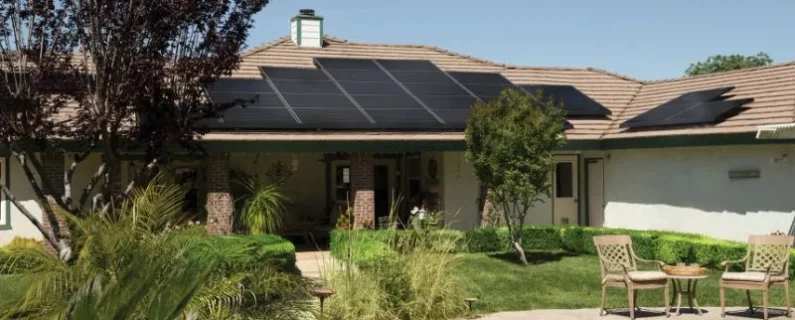
Improving your Nevada property’s energy efficiency can lead to significant savings on utility bills and a more comfortable living environment. By making simple, cost-effective changes, you can reduce energy consumption and enhance your home’s efficiency.
In this blog, we’ll explore ten practical ways to make your property more energy efficient. From upgrading to energy-efficient appliances and light bulbs to installing solar panels and improving insulation, these tips will help you save energy and money. You’ll learn to optimize heating and cooling, utilize natural light, and conduct a home energy audit.
Looking for a property management company near you? Contact us today!
1. Change Out Light Bulbs
One of the simplest and most cost-effective ways to improve your home’s energy efficiency is to change out light bulbs. By switching from traditional incandescent bulbs to LED or CFL bulbs, you can save up to 75% on lighting costs. LED and CFL bulbs last several times longer and use less energy than incandescent bulbs. This change reduces your electricity bill and contributes to a more energy-efficient home.
Using energy-efficient light bulbs is an easy step to reduce energy consumption and make your home more energy efficient. This small adjustment can lead to significant savings over time, reducing both energy costs and the need for frequent bulb replacements. Moreover, these modern bulbs produce less heat, contributing to lower cooling costs during warmer months.
2. Add Insulation to Attics and Walls
Adding insulation to attics and walls significantly improves your property’s energy efficiency. Insulation helps maintain a consistent indoor temperature by keeping warm air inside during the winter and cool air during the summer. This results in lower heating and cooling costs, reducing your energy bills. Insulation minimizes drafts and blocks outside noise, creating a more comfortable living environment.
When choosing insulation, select the right type for your property and climate. Proper insulation can save energy and make your home more energy efficient. Consider materials like fiberglass, cellulose, or spray foam for optimal results. Insulating your attic and walls can significantly save utility bills while enhancing your home’s energy efficiency.
3. Repair or Replace Your Roof
Repairing or replacing your roof is a great way to make energy-efficient upgrades to your property. A new roof can result in significant savings, as modern roofs are generally more energy efficient. They can reduce heat gain during summer and minimize heat loss during winter, improving your home’s energy efficiency and lowering heating and cooling costs.
Even simple repairs, such as fixing flashing and sealant, can prevent air leaks and help maintain the desired temperature inside your home. These repairs can stop hot air from escaping in winter and keep cool air during summer, enhancing your home’s energy efficiency and reducing energy consumption.
Improving your roof’s condition can make your home more energy efficient, save on utility bills, and contribute to overall energy savings.
4. Upgrade to an Electric Air-Source Heat Pump
Electric air-source heat pumps are an effective way to make your property more energy efficient. By replacing traditional heating and cooling systems with an electric air-source heat pump, you can cut your energy consumption by up to 40%. These pumps use a small amount of electricity to transfer heat from the outside air into your home during winter and from inside your home to the outside air during summer. This process significantly reduces energy costs throughout the year.
Upgrading to an electric air-source heat pump is a smart choice for improving your home’s energy efficiency. These systems provide consistent heating and cooling, making your home comfortable while lowering energy bills. Unlike traditional HVAC systems, heat pumps work efficiently in various climates, providing both heating and cooling from a single unit.
5. Opt for Energy-Efficient Lighting and Power Strips
Opting for energy-efficient lighting and power strips is an excellent way to reduce your property’s energy consumption. LED and CFL bulbs use significantly less electricity than traditional incandescent bulbs and can last up to 25 times longer. By replacing your traditional bulbs with these energy-efficient models, you can improve your home’s energy efficiency and save on your electricity bill.
Installing power strips in areas with multiple electronics, such as the living room or home office, can also help save energy. Power strips allow you to turn off several devices simultaneously, reducing excess energy usage.
6. Upgrade to a Smart Thermostat
Upgrading to a smart thermostat is a simple and cost-effective way to make your home more energy efficient. Smart thermostats monitor the temperature inside your home and adjust it automatically, leading to significant energy savings. They can detect when no one is home and turn off the heat or air conditioning, reducing energy consumption and lowering your electricity bill.
7. Install Solar Panels
Solar panels capture the sun’s energy and convert it into electricity, providing a renewable power source for your home or business. Not only do they help reduce your carbon footprint, but they also offer long-term savings on utility bills. Installing solar panels is a practical way to decrease energy consumption and invest in sustainable energy.
When you install solar panels, you can significantly reduce your home’s energy usage. Solar panels harness the sun’s rays, allowing you to use less energy from the power grid. This shift can lower electricity bills, making your home more energy efficient.
Moreover, solar panels contribute to an energy-efficient home by supplying clean energy that powers your household. They are particularly effective in regions with abundant sunlight, but technological advancements have also made them viable in less sunny areas. Investing in solar panels, you proactively improve your home’s energy efficiency and reduce overall energy costs.
8. Seal Windows and Doors
Sealing windows and doors is essential for making your property more energy efficient. By closing the gaps around windows and doors, you help keep warm air inside during winter and cool air during summer. This simple action can significantly reduce your heating and cooling costs, lowering utility bills.
When you seal windows and doors, you prevent drafts and minimize energy loss. Sealants are designed to expand and contract with temperature changes, maintaining an airtight seal. This ensures that your home’s energy efficiency remains consistent throughout the year.
Use weatherstripping for doors and caulk for windows to achieve the best results. These materials are cost-effective and easy to apply, making them ideal for homeowners looking to save energy without a major investment. Regularly checking and maintaining these seals will further enhance your home’s energy efficiency and contribute to energy savings over time.
9. Upgrade Appliances for Greater Efficiency
Investing in energy-efficient appliances is a simple and cost-effective way to improve your home’s energy efficiency. Energy-efficient models of refrigerators, dishwashers, and washing machines use less energy, contributing to lower electricity bills.
Upgrading to a programmable thermostat can also help save energy by allowing you to control your heating and cooling costs more effectively. Similarly, power strips can prevent excess energy consumption by making it easy to turn off multiple devices simultaneously.
To further improve energy efficiency, consider a home energy audit. This can identify areas where you may be wasting energy and suggest ways to save. By implementing these changes, you can make your home more energy efficient, resulting in significant savings on your energy bills and a more sustainable lifestyle.
10. Install Ceiling Fans
Ceiling fans use significantly less electricity than traditional air conditioning units and can provide the same comfort level. In addition, by circulating the air in your home, ceiling fans help reduce energy consumption by allowing you to set the temperature on your thermostat a few degrees higher in the summer and a few degrees lower in the winter.
Hire a Property Manager in Las Vegas, NV
Making your property more energy efficient doesn’t have to be complicated or expensive. Implementing these ten simple and cost-effective strategies can significantly reduce energy consumption, lower utility bills, and create a more sustainable environment. Whether upgrading to LED lighting, sealing gaps and cracks, or installing a programmable thermostat, each step you take enhances your home’s efficiency, comfort, and value.
At Faranesh Real Estate and Property Management, we understand the importance of energy efficiency in maintaining a property’s appeal and functionality. Our team of experts is dedicated to helping you achieve these goals through tailored solutions that meet your unique needs. From comprehensive energy assessments to hands-on implementation, we offer a full range of services to ensure your property operates at its best. Contact us today to learn more about how we can assist you in making your property more energy-efficient and environmentally friendly.
Learn more about improving your property with these 5 Easy Steps For A Standout Rental Listing




